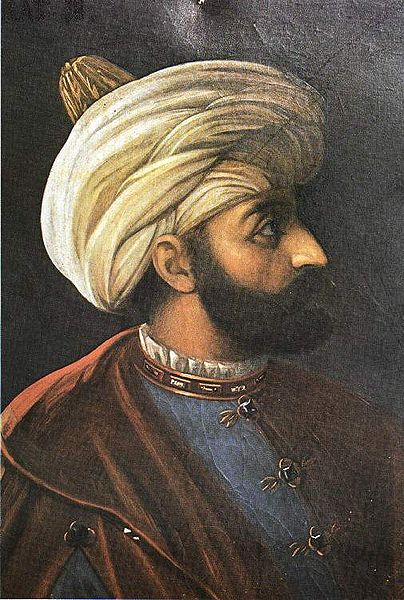<Back to Index>
- Astronomer Henrietta Swan Leavitt, 1868
- Writer Mao Dun (Shen Dehong), 1896
- Sultan of the Ottoman Empire Murad III, 1546
PAGE SPONSOR

Murad III (Ottoman Turkish, Persian: مراد ثالث Murād-i sālis, Turkish: III.Murat) (4 July 1546 – 15/16 January 1595) was the Sultan of the Ottoman Empire from 1574 until his death.
Born in Bozdağan or Manisa, Murad III was the eldest son of sultan Selim II (1566 – 74), and succeeded his father in 1574. Murad began his reign by having his five younger brothers strangled. His authority was undermined by the harem influences, more specifically, those of his mother and later of his favorite wife Safiye Sultan. The power had only been maintained under Selim II by the genius of the all powerful Grand Vizier Mehmed Sokollu who remained in office until his assassination in October 1579. The reign of Murad III was marked by wars with Safavids and Habsburgs and Ottoman economic decline and institutional decay.
He had two large alabaster urns transported from Pergamon and placed on two sides of the nave in the Hagia Sophia in Constantinople.
From him descend all succeeding Sultans, through his marriage to his maternal relative Valide Sultan Safiye Sultan, originally named Sofia Baffo, a Venetian noblewoman, mother of Mehmed III.
A large wax candle dressed in tin which was donated by him to the Rila monastery in Bulgaria is on display in the monastery museum.
Numerous envoys and letters were exchanged between Elizabeth I and Sultan Murad III. In one correspondence, Murad entertained the notion that Islam and Protestantism had "much more in common than either did with Roman Catholicism, as both rejected the worship of idols", and argued for an alliance between England and the Ottoman Empire. To the dismay of Catholic Europe, England exported tin and lead (for cannon casting) and ammunitions to the Ottoman Empire, and Elizabeth seriously discussed joint military operations with Murad III during the outbreak of war with Spain in 1585, as Francis Walsingham was lobbying for a direct Ottoman military involvement against the common Spanish enemy.
Murad died in the Topkapı Palace of Constantinople in 1596.
Orhan Pamuk's historical novel Benim Adım Kırmızı (My Name is Red, 1998) takes place at the court of Murad III, during nine snowy winter days of 1591, which the writer uses in order to convey the tension between East and West.